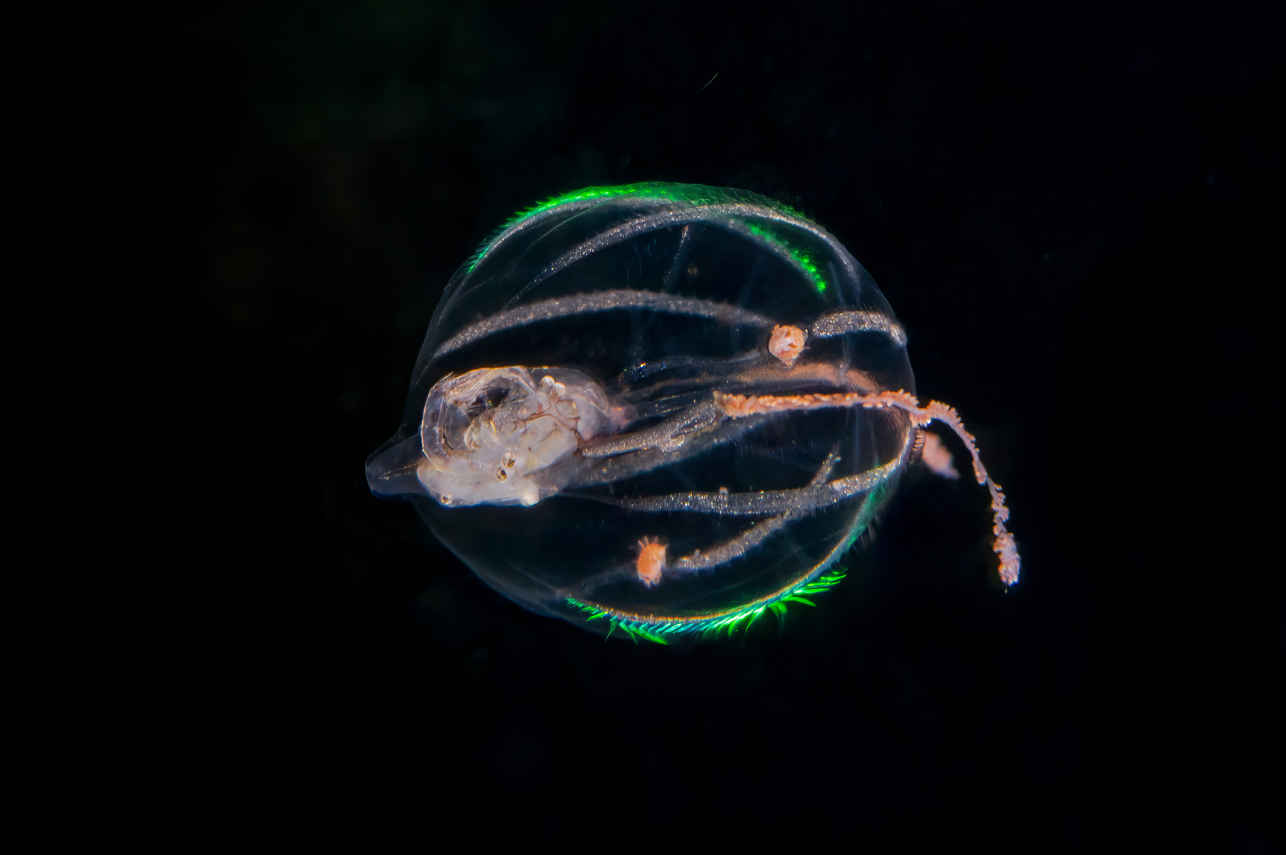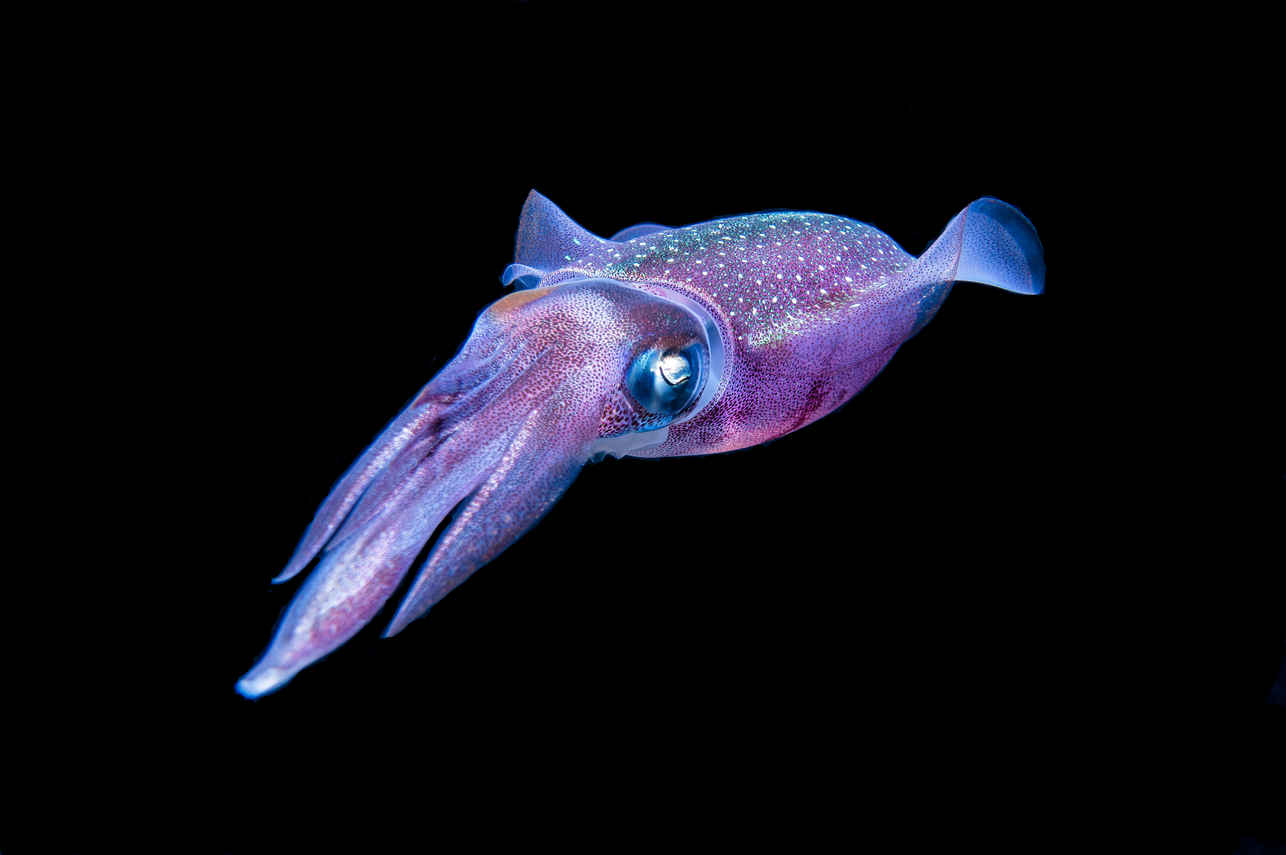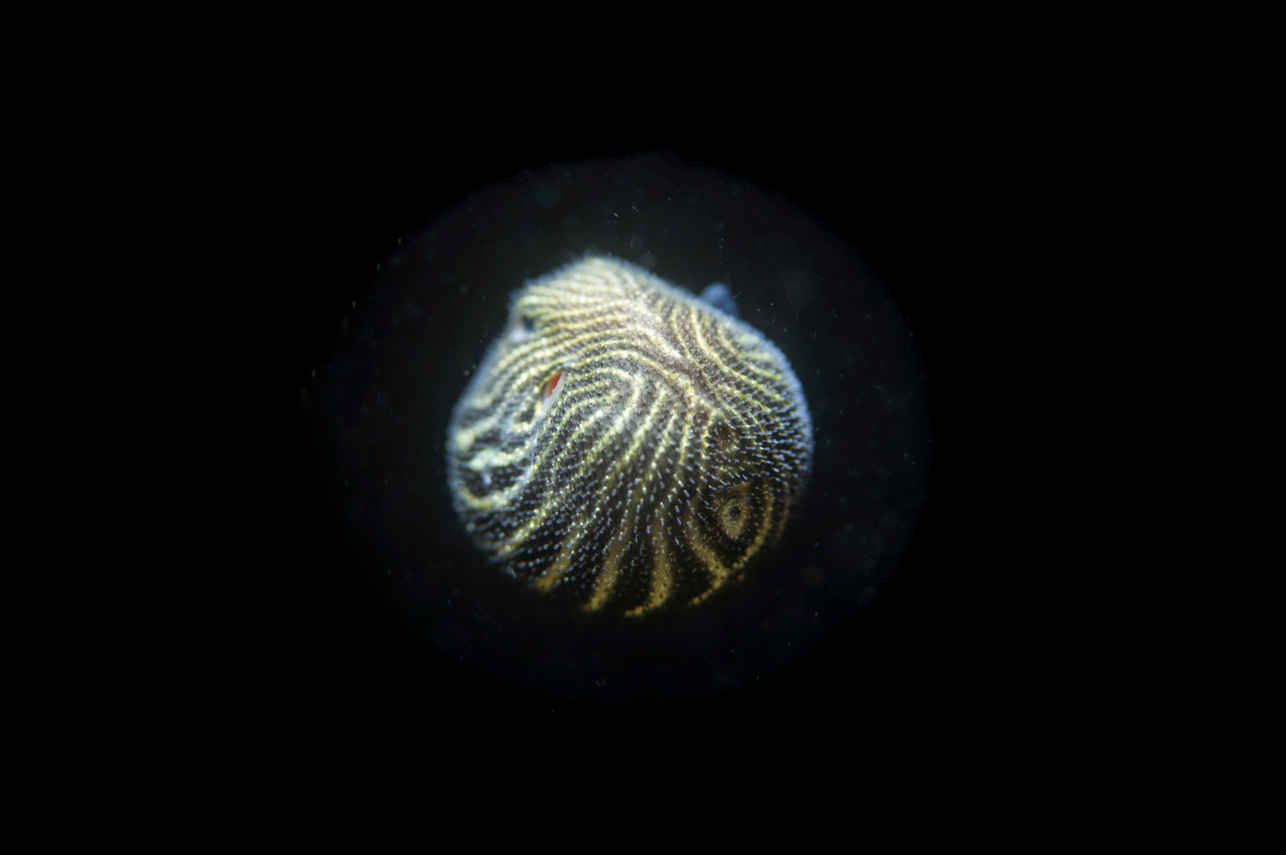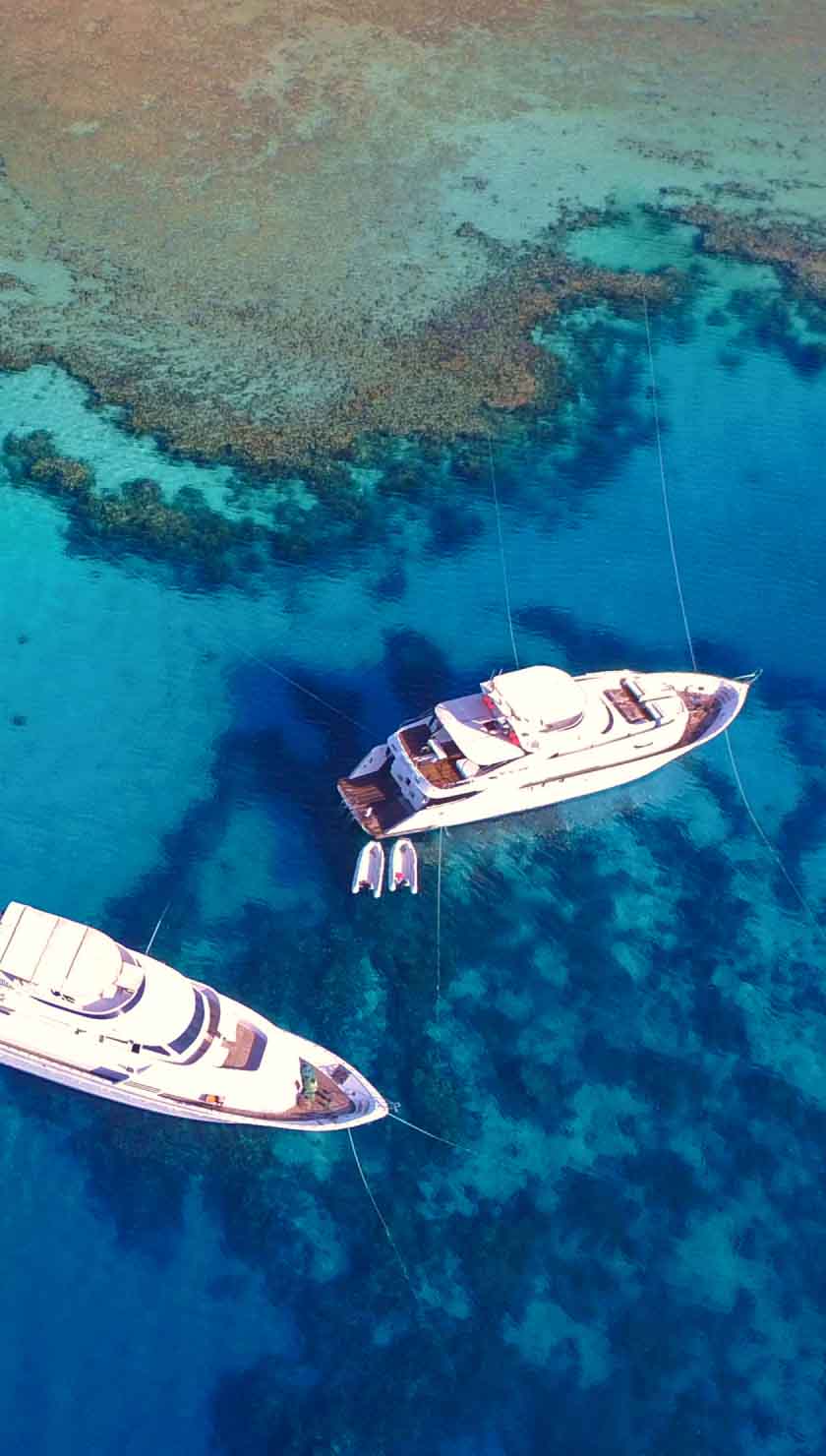An Explorer's Guide to Black Water Diving
For many divers, the ocean’s final frontier isn’t a remote wreck or a deep cave—it’s the vast, seemingly empty expanse of the open ocean at night. Welcome to the world of black water diving, the most surreal and captivating adventure you can have with a scuba tank. It’s a journey into a hidden ecosystem that comes alive only after the sun goes down, offering a glimpse of life forms so strange and beautiful they seem to be from another planet. As specialists in Asia-Pacific’s most extraordinary liveaboard experiences, we invite you to explore this unique type of diving in the world-class destinations of the Philippines, Indonesia, and Micronesia.
What Exactly is Black Water Diving?
Imagine drifting weightlessly in the deep, dark blue, miles from shore, with thousands of feet of water beneath you. The only light comes from the powerful beams of the dive boat and your own torch, cutting through the inky blackness. This is the essence of black water diving.
The dive is conducted at night in the open ocean (the pelagic zone), far from any reef. Divers and a powerful downline of lights are suspended at a shallow depth, typically around 40-60 feet (12-18 meters). This setup acts as a beacon, attracting an incredible array of deep-water organisms that undertake the largest migration on Earth. Every night, countless planktonic and larval creatures ascend from the depths to feed near the surface. A black water dive places you directly in the path of this vertical migration, turning an empty void into a vibrant, living cosmos.
The Appeal: Why Float in the Dark?
So, what draws divers to this seemingly intimidating experience?
Discover an Alien World
The creatures you will see are unlike anything you’ll encounter on a reef. Many are in their larval stages, looking completely different from their adult forms. You'll see translucent fish, iridescent jellies, and cephalopods with otherworldly shapes and patterns.

The Sensation of Space
With no bottom or reef for reference, the feeling is often compared to a spacewalk. You are an astronaut floating in liquid space, surrounded by a galaxy of tiny, shimmering life forms.
Unparalleled Photography
For underwater photographers, black water diving is the ultimate challenge and reward. It offers the chance to capture images of incredibly rare and beautiful subjects against a clean, black background, resulting in stunning, high-contrast photographs.

The Thrill of the Unknown
Every black water dive is completely different. You never know what will drift into the light—it could be a tiny, jewel-like lobster larva, a female paper nautilus, or even something yet to be identified by science.
Is Black Water Diving For You? Skill and Temperament
Black water diving is an advanced activity that requires a specific skill set and a calm, adventurous mindset. It is perfect for:
- Experienced Divers: Those who are comfortable in the water and looking for a new challenge.
- Underwater Photographers: Especially macro enthusiasts who want to capture unique subjects.
- Marine Biology Lovers: Anyone fascinated by the weird and wonderful larval stages of marine life.
Required Skill Level:
- Certification: A minimum of an Advanced Open Water certification is required by all reputable operators.
- Excellent Buoyancy: This is non-negotiable. With no visual references, you must be able to maintain your depth precisely through buoyancy control alone.
- Night Diving Experience: You should be completely comfortable diving in darkness.
- Calm Demeanor: The environment can be disorienting. Divers who are prone to anxiety or vertigo should reconsider.
The Technique: How Black Water Diving Works
Safety and procedure are paramount. The dive boat motors several miles offshore to a location over very deep water. A weighted downline, rigged with a series of powerful, upward-facing lights, is deployed from the boat. This "light trap" attracts the migrating organisms. Divers are then tethered to the main line or the boat itself with a shorter line, allowing them to explore the illuminated area without drifting away. Your dive guide will be in the water with you, using their expert eyes to point out the tiniest and most camouflaged critters.
Your Black Water Diving Destination Guide
While this unique dive can be done anywhere with deep water access, the Coral Triangle and Micronesia offer some of the most biodiverse and exciting experiences on the planet.
The Philippines: The Epicenter of Black Water
Anilao, just a few hours south of Manila, is arguably the world’s most famous black water diving destination. Situated in the Verde Island Passage, the "center of the center" of marine biodiversity, the sheer abundance and variety of life here are staggering.
Why Here? The deep-water channels and nutrient-rich currents create a perfect environment for pelagic life. The local dive operators were pioneers in developing the techniques for this type of diving, and their expertise is unmatched.
What You’ll See: Anilao is famous for encounters with the elusive blanket octopus, pelagic seahorses, wonderpus and mimic octopus larvae, and an incredible assortment of tiny, jeweled crustaceans and larval fish.
Best Time to Go: The prime season for black water diving in Anilao is from January to May, during the cooler, dry season when conditions are calmest and critter life is at its peak.
Indonesia: From Muck to Midnight

Indonesia, the muck diving capital of the world, offers a unique black water experience. The same volcanic environment that creates the perfect habitat for bizarre critters on the seafloor also fuels a rich pelagic zone.
Why Here? The Lembeh Strait is the premier location, offering a seamless transition from hunting for macro critters by day to finding their larval forms at night. The biodiversity is immense, and operators are highly experienced. Emerging destinations like Bali are also beginning to offer world-class black water experiences.
What You’ll See: Expect to find wonders like the flamboyant larva of the mantis shrimp, ornate ghost pipefish larvae, countless species of translucent squid, and rare jellyfish.
Best Time to Go: You can do black water dives year-round in Lembeh, but the main diving season from March to November generally offers the best conditions.
Micronesia: Diving Over the Abyss in Palau
Palau offers a different flavor of black water diving. While famous for its sharks, mantas, and pristine reefs, the islands are surrounded by incredibly deep ocean trenches, providing a dramatic backdrop for this unique dive.
Why Here? The experience in Palau is about the pristine, oceanic environment. You are drifting in some of the clearest water on the planet, over trenches that plummet thousands of feet. It’s a truly wild and remote feeling.
What You’ll See: While still featuring many larval creatures, the focus here can also be on larger bioluminescent organisms like comb jellies and siphonophores. You may also encounter larger pelagic visitors drawn to the lights.
Best Time to Go: Palau’s prime diving season is during the dry months from November to May, offering the calmest seas for venturing offshore for these nightly expeditions.
Ready for the Dive of a Lifetime?
Black water diving is more than just a dive; it's an exploration into a new dimension of the underwater world. It pushes your skills, rewards your curiosity, and reveals a universe of life you never knew existed. If you’re ready to take the plunge into the planet's final frontier, contact us today to book a liveaboard trip to the Philippines, Indonesia, or Micronesia and add this unforgettable experience to your logbook.










